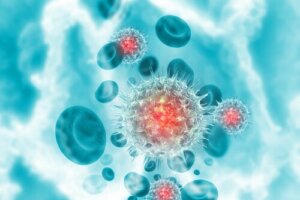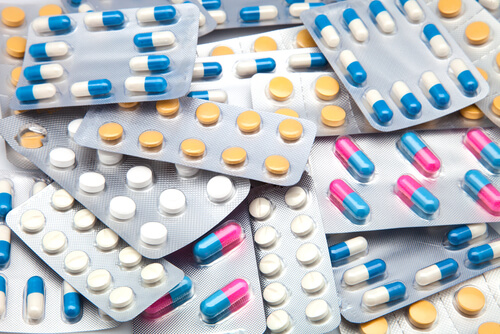All About Infectious Diseases

Infectious diseases are those that are developed by pathogenic microorganisms, such as viruses, bacteria, fungi, or parasites. These pathologies are transmitted directly or indirectly from one person to another. Furthermore, when the disease can be transmitted from an animal to the human species, it is called zoonosis.
Infectious diseases are characterized by the appearance of different symptoms, among which we can mention fever, general malaise, and decline. However, each disease will develop characteristic symptoms. Still, all infectious diseases go through three stages:
- The incubation period: This is the time between the entry of the agent and the appearance of the first symptoms. Here, the pathogen can multiply and spread through the attack areas. The duration of this first stage depends on the microorganism responsible for the disease.
- The development period: It’s at this stage that the symptoms of the disease appear.
- Convalescence: This is the last stage, in which the disease disappears and the patient recovers from the infection.
Next, we’ll explain which are the most common infectious diseases :
- Pneumonia
- Hepatitis A
- Dengue
- Chikungunya fever
- Tuberculosis
- HIV
- Human papilloma virus
- Malaria
- Zika virus
- Yellow fever
1. Pneumonia
Pneumonia affects the lung parenchyma. It develops causing an inflammatory reaction in response to microorganisms. In the most severe cases, the disease can spread from the lung to other organs.
To deal with it, antibiotic drugs that adapt to the patient’s age, comorbidity, the severity of the episode, and the site of acquisition of the infection are usually used. During the time when the influenza virus circulates and in severe cases, antivirals are also used.

2. Hepatitis A
This infectious disease is caused by a virus, hepatitis A or HAV. It’s transmitted through contaminated food or water. Regarding its prevalence, it’s more frequent in underdeveloped countries where hygiene measures are deficient.
Hepatitis A is characterized by acute inflammation and is generally self-feeding in the liver. The clinical picture varies according to the patient. However, the risk of developing symptoms and their severity increases as the patient gets older.
Typical symptoms of hepatitis A are:
- Jaundice: A yellow tint to the skin and eyes
- Choluria: Urine that’s dark in color.
- Abdominal pain
There’s no specific antiviral treatment, as it’s a self-limited disease. For this reason, treatment is supportive and systematic.
3. Dengue
Dengue is an infectious disease transmitted by the bite of infected female mosquitoes of the genus Aedes aegypti. It’s similar to the flu but much more intense. It affects, above all, infants, young children, and adults.
Mainly, it affects inhabitants of tropical and subtropical regions. As for its symptoms, they appear after 3 days and up to 14 days after the bite of the female mosquito. Among the most frequent are the following:
- Fever
- Severe headaches
- Muscle and joint pain
- Exanthema
To treat this disease, today, there’s no specific treatment. Dengue is a life-threatening complication, but its early clinical diagnosis and clinical care by experienced healthcare personnel often save patients’ lives.
Read also: Types of Migraine
4. Chikungunya fever
Like other infectious diseases such as dengue, chikungunya is also transmitted by the bite of an infected female mosquito. However, in this case, the infectious species are Aedes aegypti and Aedes albopictus, infected by an RNA virus of the alphavirus genus.
They tend to bite during the day, but peak activity is in the early morning and late afternoon. Chikungunya fever appears 4 to 8 days after the bite, although this symptomatic period may increase. Aedes mosquito infection is characterized by a sudden onset of fever, joint, muscle pain, headache, nausea, tiredness, and skin rashes.
Regarding the outcome, most patients make a complete recovery. In addition, they usually suffer only the mildest symptoms and the infection can go unnoticed. There’s no specific treatment for this infectious disease. The cure focuses on the relief of symptoms.
5. Tuberculosis
This infectious disease is caused by the bacterium Mycobacterium tuberculosis, known as Koch’s bacillus. Its name honors the scientist who discovered the disease, Robert Koch.
Tuberculosis is transmitted by air and the infected person may or may not develop symptoms. 10% of patients develop the disease throughout their lives. Typical symptoms include:
- Cough
- Expectoration
- General discomfort
- Fever
- Sweating
To treat this infectious disease, anti-tuberculosis drugs are administered. The most commonly used clinically are rifampicin, isoniazid, ethambutol, and pyrazinamide. The doctor will establish how and when to administer these medications.
6. HIV
HIV is the human immunodeficiency virus or AIDS. This disease, as its name suggests, causes a weakening of the patient’s immune system, mainly the CD4 T lymphocytes.
From a clinical point of view, the patient can be completely asymptomatic, which is known as a virus carrier, or have the infection. Infections can be of two types:
- Of a mild nature: These are symptomatic patients.
- Of a serious nature: Also known as opportunists. This last stage is known as acquired immunodeficiency syndrome (AIDS).
Typically, acute HIV infection isn’t accompanied by symptoms, or they often go unnoticed. However, some patients may suffer from them, the most typical being some of the following:
- Fever
- Headache
- Discomfort
In addition to those mentioned, other symptoms that are more striking and specific to this infectious disease may also appear, such as spots on the skin, viral meningitis, or an increase in the size of the lymph nodes.
You may be interested in: Types of Meningitis
In terms of treatment, unlike other infectious diseases, antiretroviral drugs are used to treat HIV. Currently, treatment based on the administration of 3 types of these drugs is highly effective, is well-tolerated, and the administration is simple, as it only requires one daily intake.
7. Human papillomavirus
The human papillomavirus or HPV includes more than 100 different strains of a virus. Some of them cause infection in the skin and others in the mucous membranes. It’s an infectious disease that’s transmitted sexually. Therefore, the best prevention measure is protection when performing sexual practices.
At the same time, in terms of symptoms, it’s characterized by the development of viral warts. In addition, the human papillomavirus is associated with the appearance of certain genital cancers.
Finally, we must take into account that, as it’s a disease of viral origin, there’s no treatment that completely eradicates the infection. Most of the clinical pictures disappear on their own. Generally, treatments are aimed at eradicating warts.

8. Malaria
This disease is also known by the name of malaria. It’s caused by the bite of a female mosquito of the genus Anopheles infected by a parasite, Plasmodium sp.
Malaria produces a series of symptoms such as fever, headache, chills, vomiting, and flu-like symptoms. It’s a serious disease that, if left untreated, can lead to the death of the patient.
Therefore, the treatment of malaria must be rapid and is based on a combination of drugs. However, in many areas of the world, parasites have become resistant to various antimalarial drugs.
9. Zika virus
Zika virus infection occurs in the same way as dengue, Chikungunya, and yellow fever, that is, by the Aedes aegypti mosquito infected by this virus.
However, in this case, there’s evidence of sexual transmission of the infection as well, as the virus has been isolated from semen.
Regarding the symptoms of infection caused by the Zika virus, we can mention:
- Slight fever
- Exanthema
- Conjunctivitis
- Muscle pain
- General malaise
As for other infectious diseases, treatment is based on reducing fever and any other symptoms that are present. Therefore, treatment is symptomatic, as there’s neither a vaccine nor a specific treatment that will cure the infection.
10. Yellow fever
Yellow fever is a viral and hemorrhagic disease. It’s another infectious disease that is transmitted, as we’ve mentioned above, by an infected mosquito, the Aedes aegypti. What’s known as “yellow” fever refers to the jaundice that some patients who suffer from it present.
Once a person is infected, yellow fever can develop in one or two phases. The first, which is the acute phase, usually appears with fever, myalgias, headaches, and chills, among others. If the patient doesn’t overcome this first phase, the second appears, which is more toxic. Most patients who develop this phase die within 10 to 14 days.
There’s no specific treatment for yellow fever. Vaccination is the most important preventive measure.
Infectious diseases are those that are developed by pathogenic microorganisms, such as viruses, bacteria, fungi, or parasites. These pathologies are transmitted directly or indirectly from one person to another. Furthermore, when the disease can be transmitted from an animal to the human species, it is called zoonosis.
Infectious diseases are characterized by the appearance of different symptoms, among which we can mention fever, general malaise, and decline. However, each disease will develop characteristic symptoms. Still, all infectious diseases go through three stages:
- The incubation period: This is the time between the entry of the agent and the appearance of the first symptoms. Here, the pathogen can multiply and spread through the attack areas. The duration of this first stage depends on the microorganism responsible for the disease.
- The development period: It’s at this stage that the symptoms of the disease appear.
- Convalescence: This is the last stage, in which the disease disappears and the patient recovers from the infection.
Next, we’ll explain which are the most common infectious diseases :
- Pneumonia
- Hepatitis A
- Dengue
- Chikungunya fever
- Tuberculosis
- HIV
- Human papilloma virus
- Malaria
- Zika virus
- Yellow fever
1. Pneumonia
Pneumonia affects the lung parenchyma. It develops causing an inflammatory reaction in response to microorganisms. In the most severe cases, the disease can spread from the lung to other organs.
To deal with it, antibiotic drugs that adapt to the patient’s age, comorbidity, the severity of the episode, and the site of acquisition of the infection are usually used. During the time when the influenza virus circulates and in severe cases, antivirals are also used.

2. Hepatitis A
This infectious disease is caused by a virus, hepatitis A or HAV. It’s transmitted through contaminated food or water. Regarding its prevalence, it’s more frequent in underdeveloped countries where hygiene measures are deficient.
Hepatitis A is characterized by acute inflammation and is generally self-feeding in the liver. The clinical picture varies according to the patient. However, the risk of developing symptoms and their severity increases as the patient gets older.
Typical symptoms of hepatitis A are:
- Jaundice: A yellow tint to the skin and eyes
- Choluria: Urine that’s dark in color.
- Abdominal pain
There’s no specific antiviral treatment, as it’s a self-limited disease. For this reason, treatment is supportive and systematic.
3. Dengue
Dengue is an infectious disease transmitted by the bite of infected female mosquitoes of the genus Aedes aegypti. It’s similar to the flu but much more intense. It affects, above all, infants, young children, and adults.
Mainly, it affects inhabitants of tropical and subtropical regions. As for its symptoms, they appear after 3 days and up to 14 days after the bite of the female mosquito. Among the most frequent are the following:
- Fever
- Severe headaches
- Muscle and joint pain
- Exanthema
To treat this disease, today, there’s no specific treatment. Dengue is a life-threatening complication, but its early clinical diagnosis and clinical care by experienced healthcare personnel often save patients’ lives.
Read also: Types of Migraine
4. Chikungunya fever
Like other infectious diseases such as dengue, chikungunya is also transmitted by the bite of an infected female mosquito. However, in this case, the infectious species are Aedes aegypti and Aedes albopictus, infected by an RNA virus of the alphavirus genus.
They tend to bite during the day, but peak activity is in the early morning and late afternoon. Chikungunya fever appears 4 to 8 days after the bite, although this symptomatic period may increase. Aedes mosquito infection is characterized by a sudden onset of fever, joint, muscle pain, headache, nausea, tiredness, and skin rashes.
Regarding the outcome, most patients make a complete recovery. In addition, they usually suffer only the mildest symptoms and the infection can go unnoticed. There’s no specific treatment for this infectious disease. The cure focuses on the relief of symptoms.
5. Tuberculosis
This infectious disease is caused by the bacterium Mycobacterium tuberculosis, known as Koch’s bacillus. Its name honors the scientist who discovered the disease, Robert Koch.
Tuberculosis is transmitted by air and the infected person may or may not develop symptoms. 10% of patients develop the disease throughout their lives. Typical symptoms include:
- Cough
- Expectoration
- General discomfort
- Fever
- Sweating
To treat this infectious disease, anti-tuberculosis drugs are administered. The most commonly used clinically are rifampicin, isoniazid, ethambutol, and pyrazinamide. The doctor will establish how and when to administer these medications.
6. HIV
HIV is the human immunodeficiency virus or AIDS. This disease, as its name suggests, causes a weakening of the patient’s immune system, mainly the CD4 T lymphocytes.
From a clinical point of view, the patient can be completely asymptomatic, which is known as a virus carrier, or have the infection. Infections can be of two types:
- Of a mild nature: These are symptomatic patients.
- Of a serious nature: Also known as opportunists. This last stage is known as acquired immunodeficiency syndrome (AIDS).
Typically, acute HIV infection isn’t accompanied by symptoms, or they often go unnoticed. However, some patients may suffer from them, the most typical being some of the following:
- Fever
- Headache
- Discomfort
In addition to those mentioned, other symptoms that are more striking and specific to this infectious disease may also appear, such as spots on the skin, viral meningitis, or an increase in the size of the lymph nodes.
You may be interested in: Types of Meningitis
In terms of treatment, unlike other infectious diseases, antiretroviral drugs are used to treat HIV. Currently, treatment based on the administration of 3 types of these drugs is highly effective, is well-tolerated, and the administration is simple, as it only requires one daily intake.
7. Human papillomavirus
The human papillomavirus or HPV includes more than 100 different strains of a virus. Some of them cause infection in the skin and others in the mucous membranes. It’s an infectious disease that’s transmitted sexually. Therefore, the best prevention measure is protection when performing sexual practices.
At the same time, in terms of symptoms, it’s characterized by the development of viral warts. In addition, the human papillomavirus is associated with the appearance of certain genital cancers.
Finally, we must take into account that, as it’s a disease of viral origin, there’s no treatment that completely eradicates the infection. Most of the clinical pictures disappear on their own. Generally, treatments are aimed at eradicating warts.

8. Malaria
This disease is also known by the name of malaria. It’s caused by the bite of a female mosquito of the genus Anopheles infected by a parasite, Plasmodium sp.
Malaria produces a series of symptoms such as fever, headache, chills, vomiting, and flu-like symptoms. It’s a serious disease that, if left untreated, can lead to the death of the patient.
Therefore, the treatment of malaria must be rapid and is based on a combination of drugs. However, in many areas of the world, parasites have become resistant to various antimalarial drugs.
9. Zika virus
Zika virus infection occurs in the same way as dengue, Chikungunya, and yellow fever, that is, by the Aedes aegypti mosquito infected by this virus.
However, in this case, there’s evidence of sexual transmission of the infection as well, as the virus has been isolated from semen.
Regarding the symptoms of infection caused by the Zika virus, we can mention:
- Slight fever
- Exanthema
- Conjunctivitis
- Muscle pain
- General malaise
As for other infectious diseases, treatment is based on reducing fever and any other symptoms that are present. Therefore, treatment is symptomatic, as there’s neither a vaccine nor a specific treatment that will cure the infection.
10. Yellow fever
Yellow fever is a viral and hemorrhagic disease. It’s another infectious disease that is transmitted, as we’ve mentioned above, by an infected mosquito, the Aedes aegypti. What’s known as “yellow” fever refers to the jaundice that some patients who suffer from it present.
Once a person is infected, yellow fever can develop in one or two phases. The first, which is the acute phase, usually appears with fever, myalgias, headaches, and chills, among others. If the patient doesn’t overcome this first phase, the second appears, which is more toxic. Most patients who develop this phase die within 10 to 14 days.
There’s no specific treatment for yellow fever. Vaccination is the most important preventive measure.
- DREYER, M. S. (1956). Enfermedades infecciosas. Prensa Médica Argentina.
- Alcaide, F., & Cayl, J. A. (2011). Enfermedades Infecciosas y Microbiologia Clinica: Introduction. Enfermedades Infecciosas y Microbiologia Clinica. https://doi.org/10.1016/j.eimc.2010.09.003
- Cercenado, E. (2011). Enfermedades Infecciosas y Microbiología Clínica. Enfermedades infecciosas y microbiología clínica. https://doi.org/10.1016/S0213-005X(11)70045-3
Este texto se ofrece únicamente con propósitos informativos y no reemplaza la consulta con un profesional. Ante dudas, consulta a tu especialista.







